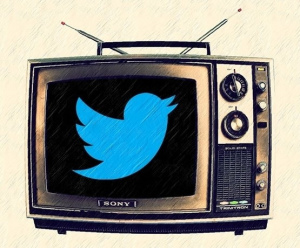Twitter Trending Down
Twitter (NYSE: TWTR) continues to stumble under the cautious eyes of the stock market. Mixed earnings results coupled by investor pressure to show monetization and margin is driving the company to desperate measures. The latest casualty is its Vine app.
Twitter’s Financials
For the September ended quarter, Twitter’s revenues grew 8% over the year to $615.93 million with an adjusted EPS of $0.13. The market had forecast revenues of $604 million and an EPS of $0.09.
By segment, Advertising revenues grew 6% to $545 million data licensing and other revenues grew 26% to $71 million. Mobile advertising revenue was 90% of total advertising revenue.
By region, revenues from the US grew 1% to $374 million and international revenues improved 21% to $242 million.
Among operating metrics, average monthly active users (MAUs) grew 3% over the year to 317 million and reported a growth of 4 million over the previous quarter. Average US MAUs grew 1.5% and average international MAUs grew 3.7% over the year. At the end of the quarter, Twitter had 67 million US-based users and 250 million international users.
For the current quarter, Twitter did not give out any revenue outlook. Instead, it projected an EBITDA outlook for the year of $700 million-$715 million, which is better than the market forecast of $699 million.
Twitter’s Cost Restructuring
Twitter is forecasting a reduction of 9% of its global staff, or 350 people, to address the demand for improved margins. Part of the reductions will happen in its sales and marketing teams as Twitter plans on integrating its sales channels. The reason for the enhanced focus on profitability improvement appears to be that a few prospective buyers passed on buying the company. Twitter had engaged Goldman Sachs in September this year to help plan a sale. Analysts have speculated its potential buyers to include companies like Salesforce, Microsoft, Disney and Alphabet – all of whom could benefit from a wide reaching social media service.
Twitter’s Vine Shut Down
In a surprising move, last week Twitter announced plans to shut down its video-sharing app Vine. Twitter released a video app earlier this year. Vine was released by Twitter nearly three years ago and it let users capture and share six second videos that ran on a loop. Vine’s shut down was probably fueled by the rapid success of alternate video sharing platforms such as Snapchat and Instagram. According to Marketly, not even 50% of the top 1% of Vine users in 2013 were posting at the start of 2016. A mere 48% of the top 1% users, primarily those with more than 10,000 followers, were still active in 2016. Others have probably migrated to newer platforms.
Twitter did not supply any particular reason for shutting down the service. But it is probably driven by its need to focus on high growth and revenue driving opportunities. Twitter’s users may not be thrilled with the news, but Vine won’t really be missed by advertisers. Many thought it was a dying platform that really served no specific advertising purpose. Its six second span did not make it a viable branding platform.
Twitter probably needs to turn to its Chinese counterpart Weibo for inspiration. Owned by Sina, during its last quarter, Weibo reported a quarterly MAU user growth of 33% to 282 million. Revenues for the service grew 36% over the year, and above all, it is profitable both at GAAP and adjusted GAAP basis. Weibo also began with a 140 character limit for its posts, but earlier this year, it allowed users to upload bigger posts. It displayed the 140 characters and let viewers click on a link to expand and view the entire post. It also has an impressive advertising model that allows businesses to purchase display ads, interest-based ad campaigns, event-based ad campaigns, and promoted feeds across networks. It also has a live streaming platform that allows viewers to buy virtual gifts from Weibo for their favorite broadcasters.
Meanwhile, Twitter’s stock is trading at $17.95 with a market capitalization of $12.6 billion. It touched a 52-week high of $30.15 in November last year and had fallen to a 52-week low of $13.73 in May this year.
Photo Credit: Esther Vargas / Flickr.com
Featured Videos
Can 1M/1M Help Me Raise Money?
How Does 1M/1M Democratize Entrepreneurship Education?
How Does 1M/1M Democratize Management Consulting?
When Is The Right Time To Join 1M/1M?
Can 1M/1M Help Me With Business Development?
Can 1M/1M Help Me With Market Sizing?
Can 1M/1M Help Me Validate My Product?
Will I Have Private 1-on-1 Sessions In 1M/1M?
How Does 1M/1M Help Entrepreneurs Connect With Silicon Valley?
Mentoring or Consulting?
Why Does 1M/1M Charge $1000 a Year?
Why Does 1M/1M Partner With Local Organizations?
Why Don\’t Mentoring Networks Work?
Why Is It Important To Study With 1M/1M Now?
Dan Stewart Story
Vikrant Mathur Story

